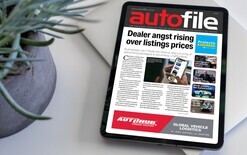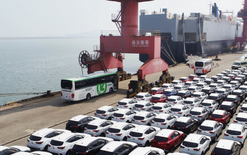Paradigm is now shifting
Reporting on the 43rd Tokyo Motor Show, I said, “the impression I’ve gained is our fleet is going to change”, writes Malcolm Yorston, of the Imported Motor Vehicle Industry Association. “At the moment the biggest users of hybrid cars in New Zealand are taxi fleets and green corporates. This is going to change and the hybrid will become mainstream.” In mid-December, Akio Toyoda, chairman of Japan Automobile Manufacturers’ Association stated: “As part of its tax revision for the year from April 1, 2014, to March 31, 2015, the Japanese government has decided to reduce automobile acquisition tax and expand breaks on eco-friendly vehicles among other measures to mitigate Japan’s heavy tax burden on automobile owners.” From what I saw at the show and Toyoda’s statement, we’re on the cusp of a paradigm shift. The used Japanese vehicles we’ll be buying over the next few years will see more hybrids on our roads. The top-selling cars in Japan, the Toyota Prius and Aqua, are hybrids. Most production of the next best seller, Honda’s Jazz, is hybrid while many popular models have hybrid and conventional options. We will see more popular model vehicles, such as the Corolla, being produced as hybrids to take advantage of Japan’s eco-friendly incentives. This will narrow our choices in the future. We’re all likely to be driving hybrids in the future. This makes me wonder about what types we’ll see on our roads? We understand the convention of hybrid, petrol and electric vehicles with battery packs supplying electricity to power the traction motors under light loading. Petrol engines supplement batteries for acceleration or heavier loading, or use regenerative braking to recharge. There are variations of hybrid and plug-ins, such as LPG-electric for Toyota’s Jpn Taxi concept. Then there are diesel-electrics. Internal combustion-hydraulic hybrid is when a petrol or diesel unit is connected to a hydraulic pump. Fuel-cell vehicles, which use hydrogen, are being advanced with different types of power units. Mazda has been developing a rotary engine to run on hydrogen, while other marques are using hydrogen to generate electricity for hybrid systems. The paradigm is shifting. You’ll be driving a hybrid or alternative-energy vehicle in the next 10 years and the uptake of this technology here will be supply-driven. The full version of this article appeared in the January 13 issue of Autofile. Click here to read or download the magazine.





